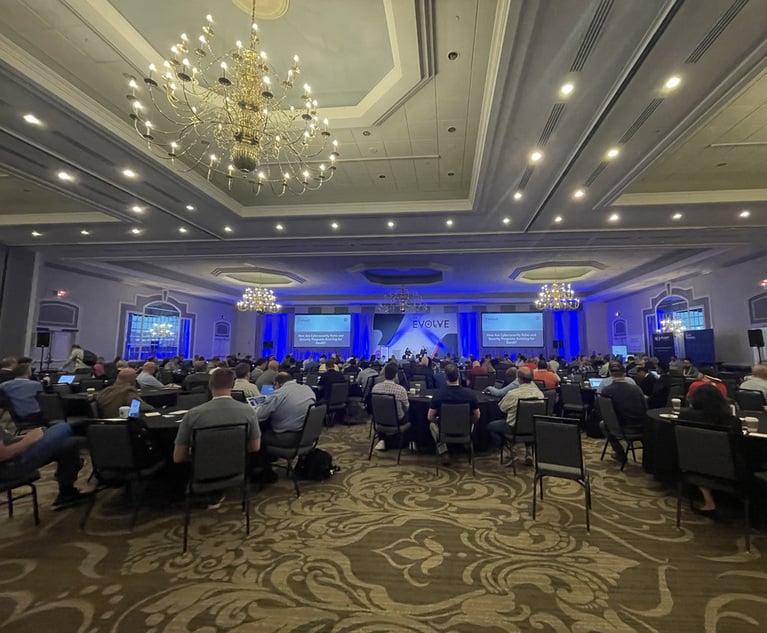Newer developments like 3-D laser and sensor technologies areenabling contractors to build in a smarter and safer way. Insurers should understand where the constructionindustry is headed in terms of technology use and how emergingdevices can help improve both physical construction sites andworker safety.
|Imagine being in the middle of a large-scale office tower build,with the framing, exterior walls and roof all finished, when younotice the structure's support beam measurements appear to bewrong. Instead of going back to the architect and engineersinvolved in the project to confirm measurements by hand, andpotentially stalling the build of the project, you use a 3-D laserscanner that in a matter of moments confirms the designmeasurements are on point and you won't have to delay thebuild.
|This is just one scenario that captures the challengescontractors face today and how the construction site of the future,which will focus on harnessing data and technology together, canultimately help contractors build in a smarter and safer way.
|Building smarter
For construction companies working off an architect andengineering professional's plans, measurements could be incorrect.When transforming a warehouse into a restaurant, for example,accuracy is highly important. Moving gas and water lines andelectrical, and designing a kitchen out of an open space by handleaves potential opportunity for error, which could also cost thecontractor time and money. If a measurement is off by even 10inches, this apparently small mistake could potentially lead togreat costs in rebuilding. In fact, according to the American Society of Civil Engineers (ASCE), thedirect costs from rework can often account for 5% of the totalconstruction costs, which is not always insurable.
|3-D laser technology captures a construction site's lines bycreating an accurate, to-scale model of the different points ofscale, including the space, air and objects. This technologymeasures the site down to the millimeter.
|Laser technology not only provides fast, accurate measurements,but also can confirm whether the measurements are in fact correct.The technology matches the architect's design against the physicalbuilding, providing an overlay of the measurements and highlightingareas where they do not align.
|Contractors seeking to build with speed and accuracy use thistechnology to help identify problems in real time, revolutionizinghow construction companies are approaching a build. According to areport from MarketsandMarketsTM, the 3-Dscanning technology market is forecasted to grow at a significantrate for the architecture and construction industry industriesbetween now and 2023.
|Future applications of 3-D technology largelyfall into two categories:
Using a 3-D laser scanner on a drone: Imagine being able to havea drone scale an 80-story building in minutes while confirmingmeasurements and accuracy from the sky. A daunting and high-riskscenario becomes a relatively easy and much safer task.
Virtual reality and augmented reality: Contractors can scan thephysical building against the design, creating either a virtualreality hollow so that workers can see where pipes will go oraugmented reality visuals where architects, engineers, inspectorsand even homeowners can see progress on a building in real-time.3-D scans can be overlaid against the Building Information Modelingdesign to provide a real-time comparison of the current buildagainst the original design
Related: Do you need insurance for your drone?
|If the industry develops a solution for construction sites,it can be applied to other industries such as manufacturing,logistics, warehousing or healthcare. (Photo:Shutterstock)
|Protecting the physical site
Among the new technologies that are currently available, mobilesensors – the size of a paperback book – can be deployed onconstruction sites to help detect the building's temperature,humidity, dust particles, noise and vibrations, among other things. Bymonitoring the building's environment, contractors can receivereal-time alerts when the building reaches certain thresholds.
|By way of example, let's say the temperature drops in an officetower construction site. With mobile sensors, the contractor canimmediately receive an alert giving them an opportunity to check onthe tower. Something as simple as a pipe bursting in the middle ofwinter because a door was left open can lead to significantlosses.
|As sensor technology advances and the market becomes morecompetitive, we will likely see more robust sensors on the marketthat are able to monitor the building's holistic environment.
|Related: Was the insurer liable for these constructiondefects?
|Workplace safety
Wearable sensors are another example of emerging technology –similar to the popular bracelets that track one's physical activityor a pedometer that measures the steps someone has taken in a day –sensors are now being tailored for construction site workers toprovide real-time data with the goal of increasing workplace safety.
|Construction sites are a high-risk work environment. In fact,some of the most common injuries experienced onconstruction sites include strains and sprains, falls fromelevation, and those related to heat stress. Repetitive motioninjuries such as bending or lifting are also common.
|Most insurance carriers today offer risk management consultantswho can go onsite and provide construction clients with a snapshotof potential risks, observations and insights into indicators thatcan potentially lead to workplace injuries. Wearable devices areessentially a safety professional standing behind each worker allday, every day, monitoring whether workers are bending correctly orif the site's temperature is placing them in a heat stressenvironment. The technology could also connect to claims data soinsurers can provide insureds with proactive proposals andsolutions to help change workers' behavior to reduce the potentialfor injuries.
|In the future, wearable technologies will be able to harnessforensic data and other information from the physical constructionsite as well as historic claims, while also receiving real-timedata that can provide predictive analytics.
|Related: Workplace injuries & illnesses in 2015[infographic]
|Smart sites of tomorrow
Construction sites, and the construction industry as a whole,represent a prime case for technology disruption. In the next 5-10years, it is probable that all of these technologies will becapable of connecting and talking to each other while outputtingdata into a single monitoring system that can be used byconstruction companies, insurers as well as architects andengineers to help take proactive actions.
|A 2016 report from McKinsey & Company foundthat large construction projects typically take 20% longer tofinish than scheduled and are up to 80% over budget. But thanks tothe construction site of the future, using 3-D lasers, mobilesensors, and wearable technology could ultimately help provide asafer, more efficient workplace and, in turn, reduce costs.
|If the industry develops a solution for construction sites, itcan be applied to other industries such as manufacturing,logistics, warehousing or healthcare. As economies of scale alsotake hold, we could see the cost of these technologies decrease andthe barriers to embracing these technologies start todissipate.
|Related: Are courts narrowing access to coverage in theconstruction industry?
|Tom Grandmaison is the Energy and Construction Leader forAIG's Commercial Insurance business. The statements,opinions, views and ideas expressed herein are those of the authorand his alone, and do not necessarily represent or otherwisereflect those of American International Group, Inc. or any of itssubsidiaries or affiliates.
Want to continue reading?
Become a Free PropertyCasualty360 Digital Reader
Your access to unlimited PropertyCasualty360 content isn’t changing.
Once you are an ALM digital member, you’ll receive:
- All PropertyCasualty360.com news coverage, best practices, and in-depth analysis.
- Educational webcasts, resources from industry leaders, and informative newsletters.
- Other award-winning websites including BenefitsPRO.com and ThinkAdvisor.com.
Already have an account? Sign In
© 2024 ALM Global, LLC, All Rights Reserved. Request academic re-use from www.copyright.com. All other uses, submit a request to [email protected]. For more information visit Asset & Logo Licensing.









